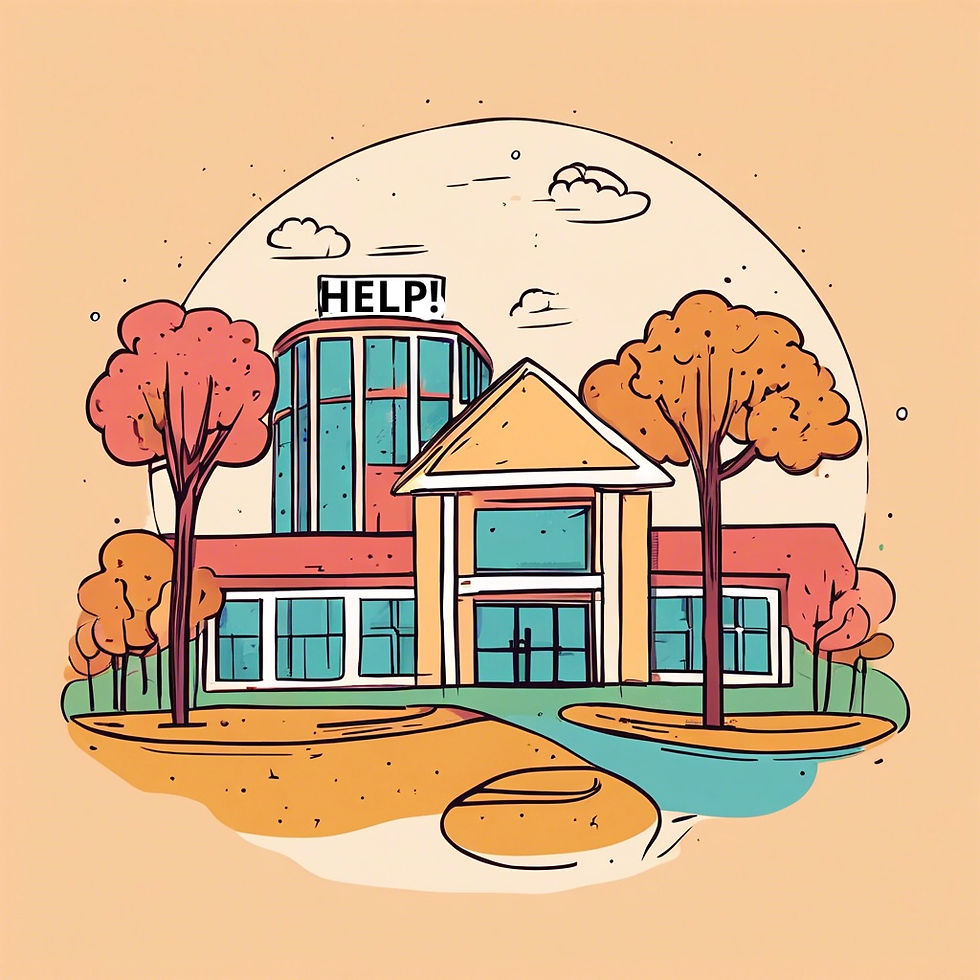Urgent School Reform is Needed: Protecting Students and Teachers Starts with Mental and Behavioral Health Support, Staffing, and Holding Guardians Accountable
- Peace Love Education

- Sep 7, 2024
- 5 min read

The safety of students and teachers has never been more critical, and it’s time to take strong, decisive action. Schools are facing an unprecedented crisis, where threats, violence, and chronic misbehavior are becoming routine. As a principal on the front lines, I go home nearly every day with new bruises and bite marks from aggressive students, while teachers and school leaders are burdened with a lack of support, excessive workloads, and increasing safety concerns. If we don’t address these issues now, we risk losing the highly qualified educators we desperately need—and the consequences for our students will be devastating.
The answer lies in school reform that focuses on three pillars: increasing staffing, bolstering mental and behavioral health support, and holding guardians accountable for their children's actions.
Mental and Behavioral Health Support is Crucial to Safety
School violence, even in its minor forms, has escalated to a point where immediate intervention is necessary. The rise in school shootings and incidents of aggression highlights the urgent need for increased mental and behavioral health resources on campuses (National Center for Education Statistics, 2023). Yet, in too many schools, these supports are either unavailable or stretched so thin that they cannot provide adequate help.
The truth is, our world has changed, and so have the challenges students face. Many are dealing with trauma, mental health struggles, and emotional regulation issues that lead to disruptive behavior. While educators are often blamed for students’ misbehavior, the root cause frequently lies in untreated or inadequately managed mental and behavioral health conditions (Centers for Disease Control and Prevention [CDC], 2022). More mental and behavioral health specialists on campuses would allow us to provide early interventions, ensuring students get the support they need before problems escalate.
Without mental and behavioral health professionals readily available, teachers are left to manage not only their academic duties but also the emotional and psychological well-being of their students. This is simply unsustainable. We cannot expect teachers to fill the roles of counselors, therapists, and social workers on top of their daily teaching responsibilities. Schools must be staffed with professionals whose sole focus is the mental and behavioral health of students if we are to keep our classrooms safe (American Psychological Association [APA], 2022).
Staffing Must Increase to Ensure Safe and Effective Schools
Arizona, like many states, is facing a severe teacher shortage. Emergency certifications are now common, with 19-year-olds—practically children themselves—being thrust into classrooms of 35 or more students (Arizona Department of Education, 2023). These young, inexperienced teachers are expected to not only teach but maintain control and safety in overcrowded classrooms. This is not how education should work, and it is a recipe for disaster.
The level of individualized attention students need is simply not possible with such overburdened staff. Teachers are making thousands of decisions every day, running on empty as they try to meet the needs of every student in their classrooms. Exhaustion has become the norm, and burnout is rampant (Sutcher, Darling-Hammond, & Carver-Thomas, 2019). Without adequate staffing, teachers cannot build the strong, supportive relationships that are crucial for student success.
Research shows that smaller class sizes and increased staffing improve both academic outcomes and student behavior (Institute of Education Sciences [IES], 2020). When teachers have time to truly know and understand their students, they can prevent many of the behavioral issues that disrupt learning. But this can only happen if schools are given the resources they need to hire more staff. Every school should have not only more teachers but also dedicated support staff to manage behavior, mental health, and student well-being.
Guardians Must Be Held Accountable for Student Behavior
Too often, guardians and society at large place the blame for student misbehavior squarely on the shoulders of teachers and schools. When students refuse to do their work, disrupt class, or act disrespectfully, it’s seen as the school’s failure. But let’s be clear: a student not listening, refusing to work, or being disrespectful is not the fault of the teacher or the school. It is the responsibility of the guardian to raise their child with basic respect, accountability, and discipline (Epstein, 2018).
When students misbehave or engage in violence, there must be consequences—not just for the student but for the guardian as well. Schools cannot be expected to manage behavioral issues alone. Guardians must be required to actively engage with the school, follow up with teachers, and work with their child to ensure they make better choices. It is not enough to drop a child off at school and expect teachers to fix everything. Education is a partnership, and without guardians holding up their end of the bargain, we will continue to see an increase in disruptive, disrespectful behavior.
Violence and Threats Must Be Addressed Head-On
It is unacceptable that students who engage in aggressive behavior—whether it’s physical violence, threats, or other forms of intimidation—are often allowed to return to class with minimal consequences. Politics and red tape have made it harder for schools to address these issues effectively. As a principal, I am appalled by the lack of support for holding students and families accountable. Instead of focusing on solutions, we are bogged down in bureaucratic hurdles that prevent real action (National Association of Secondary School Principals [NASSP], 2021).
Every incident of aggression, no matter how minor, must be taken seriously. Schools need the authority to act swiftly and decisively to remove violent students from the classroom environment and provide interventions that involve the entire family. We must stop protecting the students who harm others at the expense of those who come to school to learn in a safe environment.
The Time for Change is Now
The current state of education is unsustainable. We need immediate reforms to ensure the safety and well-being of both students and staff. This includes:
- Increasing staffing**: Smaller class sizes and more support staff are critical for both safety and individualized learning.
- Expanding mental and behavioral health resources**: Schools need more counselors and mental health professionals to address the growing emotional, behavioral, and psychological needs of students.
- Holding guardians accountable**: Guardians must be active participants in their child's education and behavior management.
Without these changes, we will continue to lose the highly qualified teachers and school staff that our children so desperately need. Teachers cannot continue to bear the brunt of an under-resourced, overburdened system.
The safety of our students and teachers is non-negotiable. It’s time to take bold action—now.
References
American Psychological Association (APA). (2022). *The role of mental health professionals in schools: Preventing violence and supporting student success.* https://www.apa.org
Arizona Department of Education. (2023). *Emergency teaching certifications in Arizona.* https://www.azed.gov
Centers for Disease Control and Prevention (CDC). (2022). *School violence and mental health statistics.* https://www.cdc.gov
Epstein, J. L. (2018). *School, family, and community partnerships: Preparing educators and improving schools.* Routledge.
Institute of Education Sciences (IES). (2020). *Class size reduction: Effects on student achievement and behavior.* https://www.ies.ed.gov
National Association of Secondary School Principals (NASSP). (2021). *School safety and accountability: A principal’s perspective.* https://www.nassp.org
National Center for Education Statistics (NCES). (2023). *Indicators of school crime and safety.* https://www.nces.ed.gov
Sutcher, L., Darling-Hammond, L., & Carver-Thomas, D. (2019). *Understanding teacher shortages: Causes and solutions.* Learning Policy Institute. https://www.learningpolicyinstitute.org



Commentaires